William Oliver
British, (1823-1901)A Bouquet of Roses
Oil on canvas, signed
A wonderful three quarter-length portrait of a young woman holding a bouquet of roses by William Oliver. The woman is posed seated on a bank in front of a wooded area and wears a classical costume. Her head, which is turned towards the flowers, is partially covered by a shawl which drapes over her shoulders. Roses have long been regarded as symbols of romance and in art usually represent love and beauty.
William Oliver was born William Oliver Williams at Worcester in 1823 to William and Jane Williams (née Oliver). Both his parents were from Wales but had relocated to Worcester where his father worked as a chemist before becoming a surgeon. Oliver showed a talent for art at an early age and when the family later moved to Birmingham he began working at the Government School of Design, where he later became the assistant master.
In 1848, he moved to London where he enrolled at the Royal Academy and was admitted to the RA school on 16 December, 1848. Whilst there, he married Jane Hughes on 30 December, 1852. The couple lived in St Pancras and went on to have 10 children. Two of their sons, William Oliver Williams, known as Oliver Rhys (1854-1907) and Reginald Arthur Williams or Reginald Arthur (1862-1899), also became artists.
Oliver began exhibiting in 1851 under his full name William Oliver Williams at the British Institution and in 1858 made his debut at the Royal Academy. He also exhibited around the country at the Royal Birmingham Society of Artists, Glasgow Institute, Manchester Art Gallery and the Walker Art Gallery, Liverpool. In the early 1850’s he won a commission from the Arundel Society to travel to Italy to draw Giotto’s fresco in Padua and other classical works. He later used his knowledge to incorporate Roman and Greek themes into his paintings, particularly fabrics and costumes.
Sometime during the early 1860’s he was declared bankrupt and moved his family to Corwen in Wales and later to Aberystwyth near to be closer to where his parents had retired. Perhaps prompted by this, he began signing his works William Oliver from 1867 and resumed exhibiting at the Royal Academy and elsewhere. By 1872, his circumstances had improved and he returned to London, residing in the St John’s Wood area. He spent his final years living at 41 Queens gate Gardens, Kensington where he died on 16 April, 1901.
Examples of his work are held by a number of public collections including the Aberystwyth University School of Art, Atkinson Art Gallery, Birmingham Museum, Bradford Museum, Kirklees Museum, Manchester Art Gallery, National Museum, Cardiff, Parc Howard Museum, Sewerby Hall Museum, Sheffield Museum, Stockport Heritage Services, Sunderland Museum, Thirlestane Castle and the Walker Art Gallery.
© Benton Fine Art
| Presentation | The painting is housed in a new English made gilt frame in the appropriate style for the period, which is in excellent condition. |
| Condition | As with all of our original antique oil paintings, this work is offered in ready to hang gallery condition, having just been professionally cleaned, restored and revarnished. |
Dimensions
| Image Size | 36 inches x 24 inches (91.5cm x 61cm) |
| Framed Size | 47.25 inches x 35.25 inches (120cm x 89.5cm) |
You May Also Like









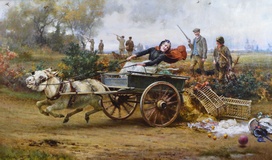
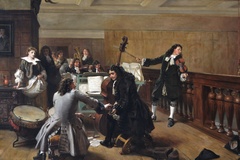
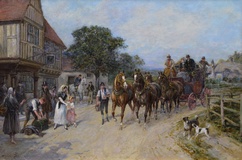
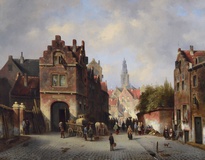
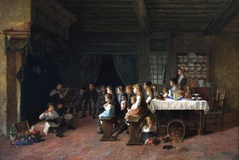
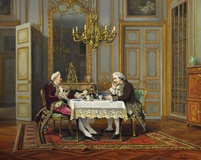

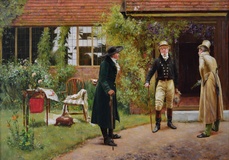
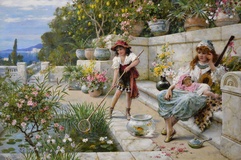
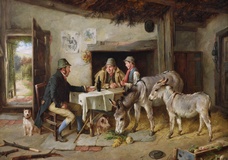
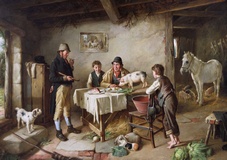
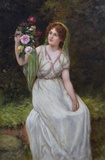 A Bouquet of Roses - William Oliver
A Bouquet of Roses - William Oliver

